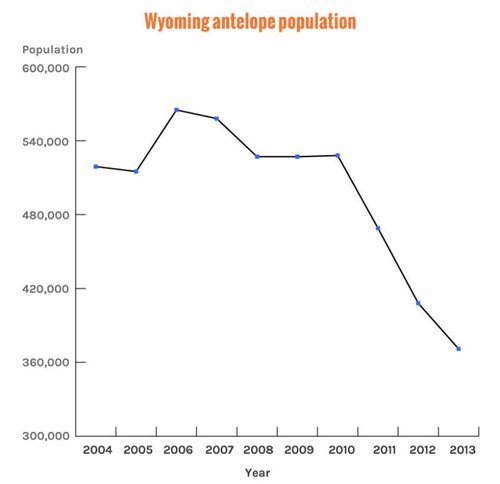For all those pronghorn guru's out there I have a question that has been haunting me since this past year's hunt. 2012 was one of the driest year's in Wyo's history in Carbon County, Wyo. I heard rumors from a reknown pronghorn expert that bucks born in years with drought will have smaller diameter pedicles/horns from the day they are born onward. Although conditions for horn growth may be favorable in years after being born bucks born in years with drought may never produce horns compared to bucks born in years with favorable conditions. I was wondering if there may be truth to this theory?
One thing that makes me wonder if this may be true is I shot 2 of the biggest bucks of my life in years with close to historic droughts.. To top it off I had a super tough time this year finding whopper bucks in a unit that historically produced many B&C bucks. This was after several mild winters and excellent fall and early spring moisture conditions. I originally would have thought this would have been a perfect scenerio for producing super horn growth.
I'm curious if drought may have lingering affects on horn growth on the same buck in future years?
One thing that makes me wonder if this may be true is I shot 2 of the biggest bucks of my life in years with close to historic droughts.. To top it off I had a super tough time this year finding whopper bucks in a unit that historically produced many B&C bucks. This was after several mild winters and excellent fall and early spring moisture conditions. I originally would have thought this would have been a perfect scenerio for producing super horn growth.
I'm curious if drought may have lingering affects on horn growth on the same buck in future years?





